New teaser with a few new shots.
You are using an out of date browser. It may not display this or other websites correctly.
You should upgrade or use an alternative browser.
You should upgrade or use an alternative browser.
All Things Star Wars
- Thread starter EgonSpengler
- Start date
Clubber Lang
Prince
- Joined
- Oct 20, 2016
- Messages
- 439
Bobba jet-pack been spotted in the earlier trailer.
Obi Won series shoots on March 2021...six new episodes, takes place 8 years after ROS and 11 years before NH.
Following panel is titled ''It's a step in that direction'' -
Obi Won series shoots on March 2021...six new episodes, takes place 8 years after ROS and 11 years before NH.
Following panel is titled ''It's a step in that direction'' -
Last edited:
Clubber Lang
Prince
- Joined
- Oct 20, 2016
- Messages
- 439
October 30th -
EgonSpengler
Deity
- Joined
- Jun 26, 2014
- Messages
- 11,679
A quick recap of season 1 of The Mandalorian, using action figures.

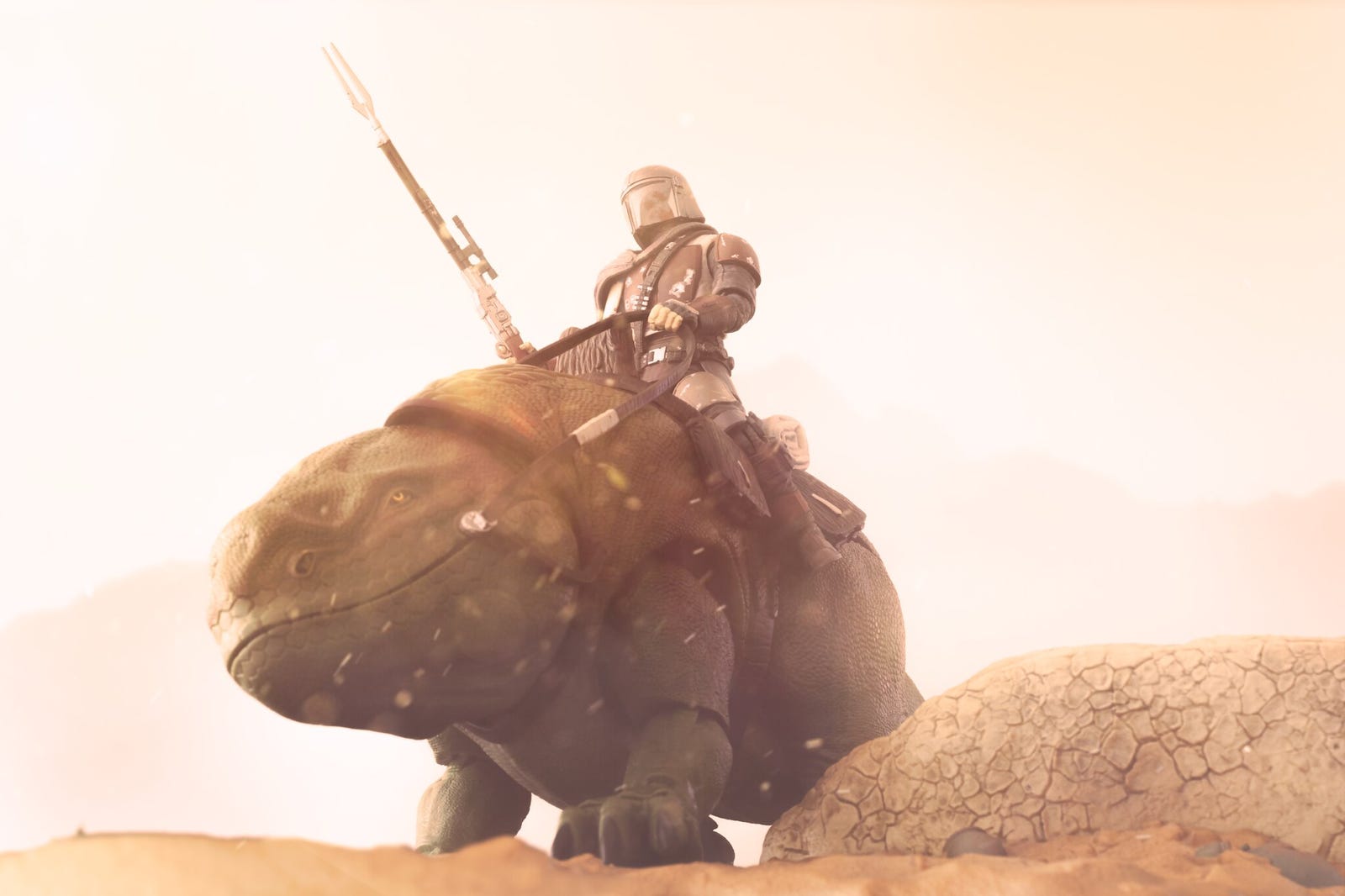
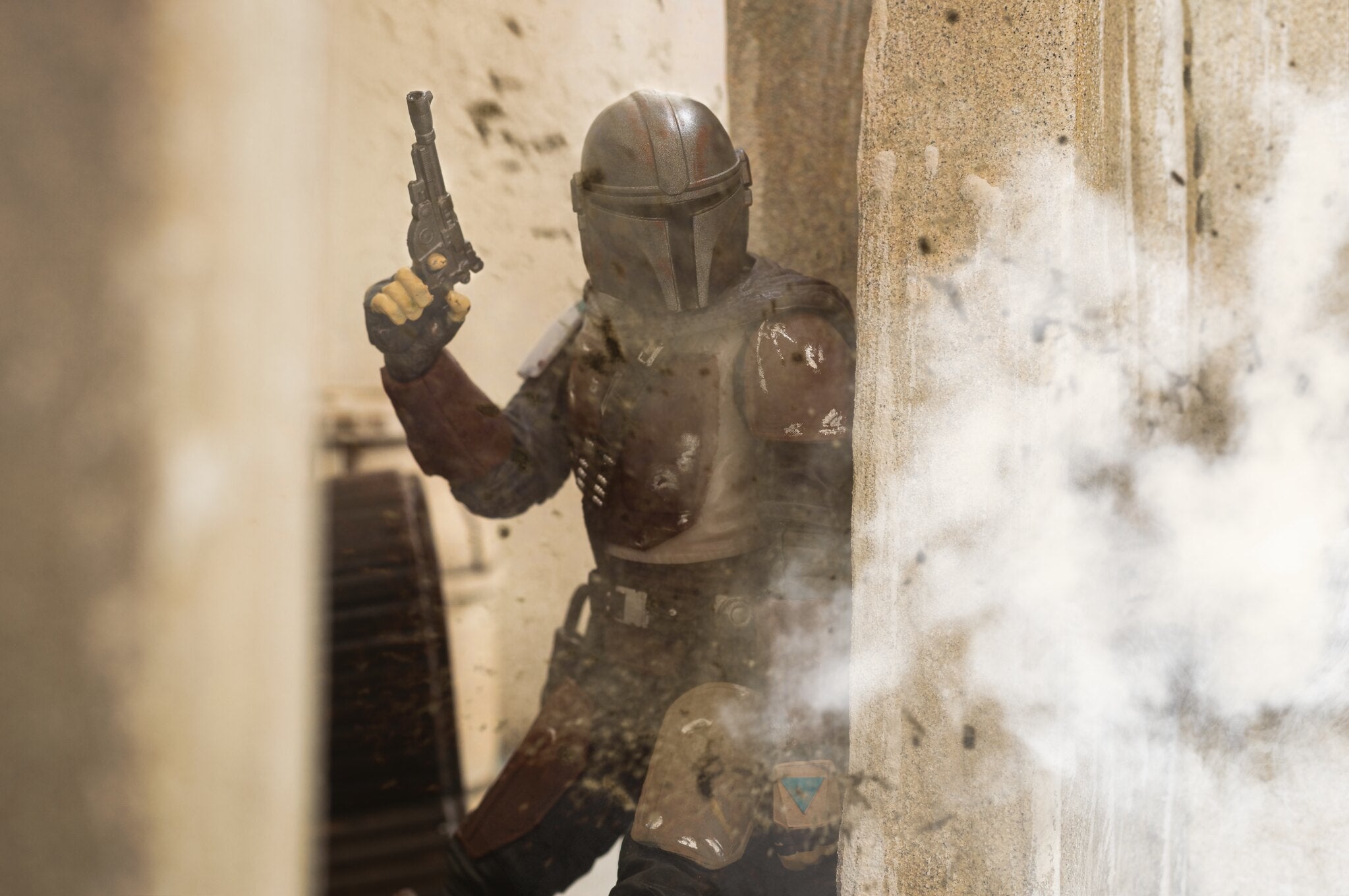
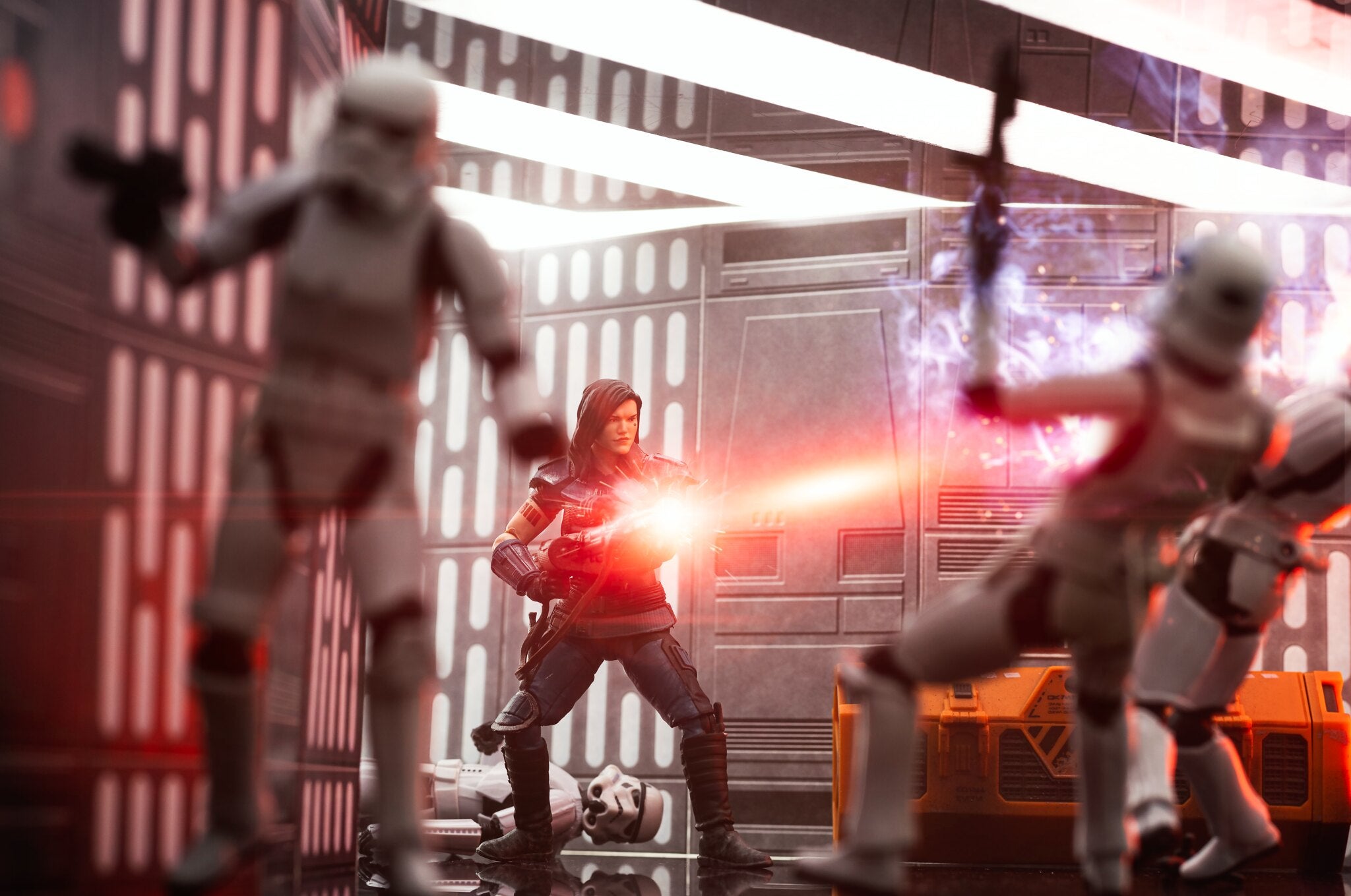
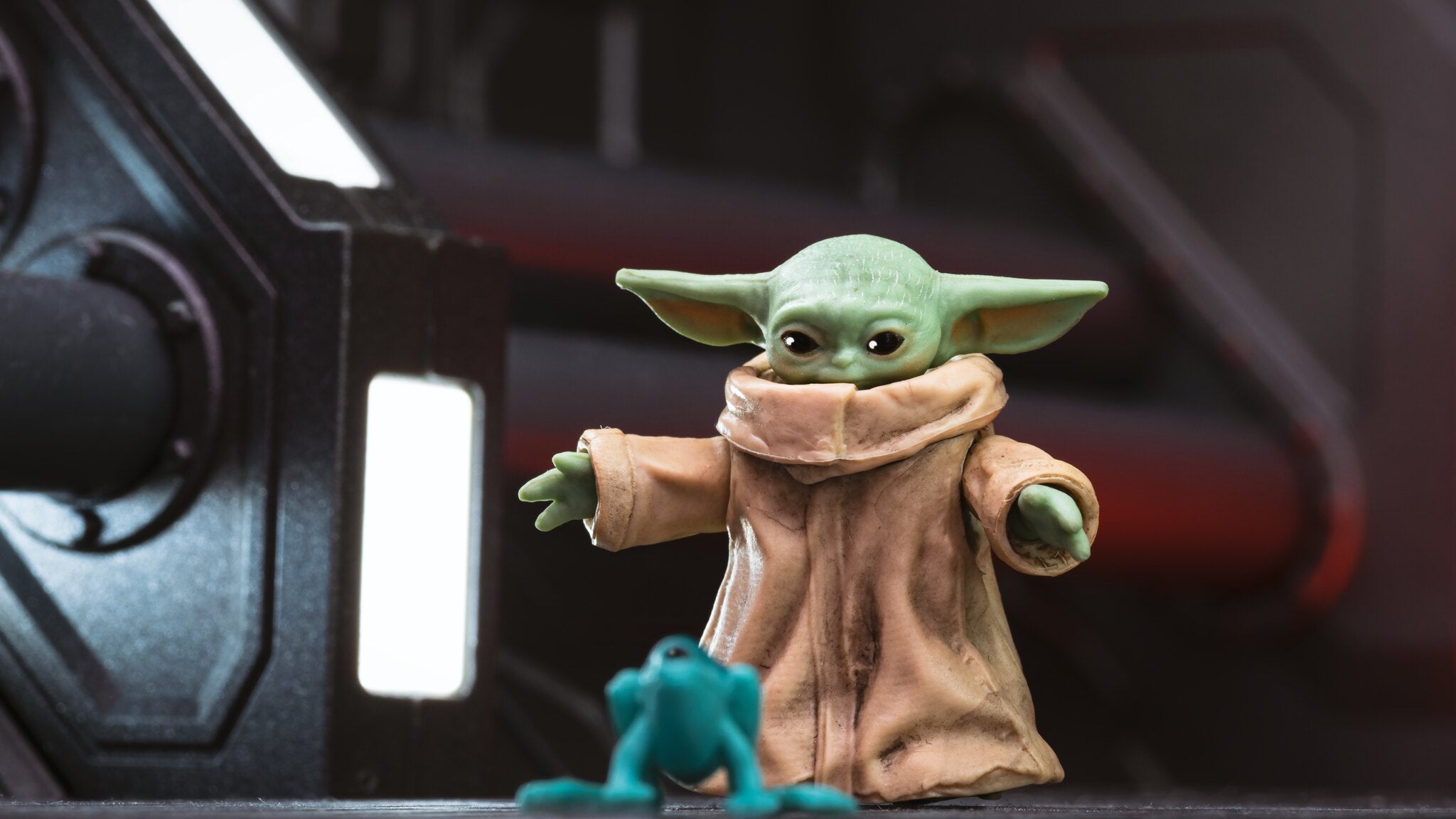
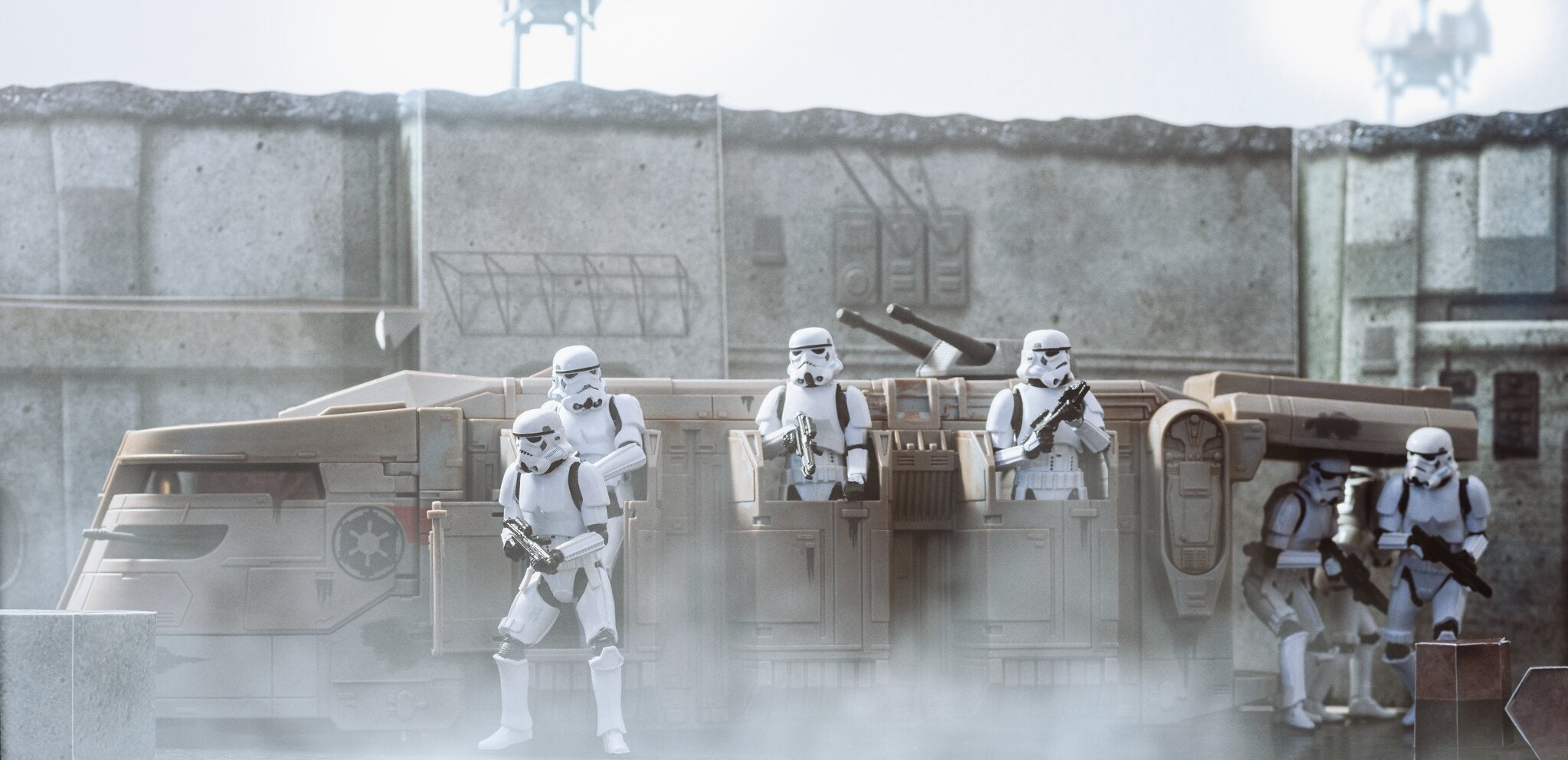

Photos by Matthew Cohen, courtesy of Kotaku. There are more pictures beyond the link. I got tired of copypasting and didn't post them all.
And music to listen to while you look at the pictures.
Spoiler :

Spoiler :

Spoiler :

Spoiler :

Spoiler :

Spoiler :

Spoiler :

Photos by Matthew Cohen, courtesy of Kotaku. There are more pictures beyond the link. I got tired of copypasting and didn't post them all.
And music to listen to while you look at the pictures.
Spoiler :
EgonSpengler
Deity
- Joined
- Jun 26, 2014
- Messages
- 11,679
I think they did have some kind of vehicle, but I don't remember if it was that thing, exactly.did they really have that security hover truck thing on TV ?
r16
not deity
- Joined
- Nov 10, 2008
- Messages
- 11,199
thanks for the information . ı have this real silly habit of trying to fix Star Wars items into "usable" stuff on the basis of pencil drawings and yes , ı have used envelopes in the years past . ı remember seeing it in a Kenner catalogue a classmate had in like '83 and if it was seen in the Mandalorian , ı like would be expected to work on it , too . And by coincidence ı stumbled on a Chinook on streoids on the web after logging out from CFC , so its hover part is already fixed ...
-
 -
-
-
Clubber Lang
Prince
- Joined
- Oct 20, 2016
- Messages
- 439
Liam Neeson says he has not been asked back to do any Star Wars stuff.
So do not expect him in the first season of Kenobi in flashback or force-ghost form, yet.
----------------------
VFX -
The Star Wars Book -
So do not expect him in the first season of Kenobi in flashback or force-ghost form, yet.
----------------------
VFX -
The Batman is being filmed with The Mandalorian’s VFX tech
The Bat and the bounty hunter now have something in common
While we probably won’t see Batman swinging into action on Tatooine anytime soon, it’s been revealed by The Hollywood Reporter that Matt Reeves’ upcoming blockbuster The Batman is using the same VFX technology as The Mandalorian.
The Mandalorian made use of a giant LED screen powered by the game engine Unreal during production. Industrial Light & Magic turned the technology into the production unit StageCraft, which they describe as “a virtual production solution”.
The news of The Batman using the technology was shared by Rob Bredow, Industrial Light & Magic’s chief creative officer. While he didn’t give specifics, he did comment that The Batman was augmenting its practical sets in the UK with an LED screen for certain scenes.
The Batman’s director of photography, Greig Fraser, is a Star Wars alum, having worked in the same position on The Mandalorian and Rogue One: A Star Wars Story – so it makes perfect sense that he’d want to use the same innovative technology across his other projects.
In fact, StageCraft technology will again be used by Taika Waititi for Thor: Love and Thunder. Waititi is another Star Wars-pro: he directed an episode of The Mandalorian and played IG-11 in the series. Waititi is also due to direct an untitled Star Wars film releasing in 2025, which starts location scouting this December.
This kind of production technique is definitely handy for creating breath-taking scenery like the sandy plains of Tatooine – and during the pandemic, it might make it easier to film without needing to relocate the production to other locations.
The Batman is currently shooting in Liverpool in the UK and Chicago in the US – and there’ve been plenty of exciting Easter eggs to mull over while we wait for the film’s release in 2022
The Star Wars Book -
About The Star Wars Book
This is the Star Wars book you're looking for.
If you want to comprehend the epic and intricate Star Wars saga, this is the book for you. It is a unique and insightful examination of this beloved franchise, including Star Wars: The Mandalorian, Star Wars: The Clone Wars, and Star Wars: The Rise of Skywalker.
Written by Star Wars experts, including fan-favourite Pablo Hidalgo, this book is packed with stunning film and TV stills, illuminating infographics and curated essays that reveal the mysteries of the Star Wars galaxy. From legendary heroes like Luke Skywalker and Leia Organa to fascinating species like the Wookiees and Tusken Raiders, this book explores the central characters, technology, governments, and events that have shaped the epic saga.
The book is divided into key subject areas - the galaxy, science and technology, the Force, the Skywalkers, galactic governments and their dissidents, and galactic denizens. Whether you are a devoted Star Wars fan or a casual reader curious to learn more, The Star Wars Book is an invaluable roadmap to this galaxy, far far away....
Last edited:
I've just been struck by the thought that, given Disney's ridiculous stance of withholding its content to try and drive people to join their ghastly Disney+ service, then at this rate I'll have ‘watched’ the Solo film in its Darths and Droids version before I get to watch the Disney-made one.
And I'm not even sure that this is a bad thing.
And I'm not even sure that this is a bad thing.
Thorvald of Lym
A Little Sketchy
I'm still torn on whether I need to buckle down and watch TRoS to prep for their take on IX.I've just been struck by the thought that, given Disney's ridiculous stance of withholding its content to try and drive people to join their ghastly Disney+ service, then at this rate I'll have ‘watched’ the Solo film in its Darths and Droids version before I get to watch the Disney-made one.
And I'm not even sure that this is a bad thing.

JohannaK
Heroically Clueless
Yes, you do. Just try to not give Disney sny money along the way.
Zardnaar
Deity
Just a few more days to the Baby Yoda show featuring the Mandalorian.
Clubber Lang
Prince
- Joined
- Oct 20, 2016
- Messages
- 439
Origins of The Mandalorians -
6 days left, quick characters re-cap -
New Prequel Archives book, look's heavy -
Mandalorians Before The Mandalorian: The Origins of Star Wars’ Most Enduring Warriors
There was a time when no one knew who the Mandalorians were. Boba Fett was just some mysterious bounty hunter with a cool suit of armor, and his people could’ve been anyone. While Jon Favreau’s The Mandalorian has started to reveal his people’s history, with no doubt more to come in The Mandalorian season 2 , it took several years for Star Wars to find “the Way,” forging the Mandalorians we know today in some great stories.
The earliest histories of the Mandalorians actually stretch back far to when the planet-wide city of Coruscant was more like the world of Warcraft. In the original legends, theTaung — a species of tall, gray simians with scaly hides — were the progenitors of the Mandalorian tradition. They were in constant contest with the native human population for their homeworld, from tribal times up until the space age, finally forced to abandon their birth world by a united human front.
The Taung never forgot this, later allying with the Sith during Kevin J. Anderson and Dario Carrasco’s Tales of the Jedi: The Sith War, with the aim to avenge themselves and reclaim Coruscant or burn it to the ground. This ire towards the human-dominated future of Coruscant, which saw their natural world twisted into a jungle of metal and greed, endured for centuries onward. However, the Taung themselves sadly wouldn’t survive nearly as long.
Fans of BioWare’s Knights of the Old Republic might be a tad confused why their Mandalorian companion Canderous Ordo, later Mandalore the Preserver in the game’s sequel, looks so… human, given his ancestors had more in common with dragons and gorillas. Unfortunately the Taung’s worship of battle combined with their exile into a hostile galaxy — the Old Republic not even fully formed by that point — led to their being worn down, until only a few remained. The Mandalorian Wars, where Darth Revan and Darth Malak rose to power, were the last crucible for the Taung, with Mandalore the Ultimate, last Taung to lead Mandalorians, on a warpath to reclaim his people’s home. Yet in that desperation, Mandalore found its future in its first Foundlings — the Neo-Crusaders.
Canderous and many like him weren’t born into the Mandalorian ways, but recruited by the Ultimate’s right hand man, Cassus Fett. Fett was one of the first humans to align himself with the Taung, viewing their cause as righteous and a perfect match for his thirst for challenge. Although an outsider, Cassus swiftly became one of the most fervent among the Mandalorians, and in time, so would countless others from hundreds of species. The Neo-Crusaders would recruit and conscript all those able to fight, forging the planets they conquered to be as strong as the Mandalorians of old. Had they not fallen to Revan and Malak, Cassus Fett’s Neo-Crusaders might’ve birthed a Mandalorian Empire.
Obviously, not everyone was keen on this, but enough found the Way compelling that they became the next generation of Mandalorians. As the Taung continued to fade after Mandalore the Ultimate, Cassus Fett and those like him carried their traditions on, evolving the Mandalorians into a cultural melting pot not unlike real-life Mongolian culture in the 12th century. It didn’t matter anymore who you were or what you believed, with even a team of four Jedi aligning with the Neo-Crusaders in John Jackson Miller’s excellent Knights of the Old Republic: War.
It’s during Miller’s run of the Knights of the Old Republic comics that you can really see the culture flourish, filling in the gaps left by BioWare’s RPGs to establish the fundamentals of who the Mandalorians would later become.They would be the chaotic-neutrals in a conflict, a caustic body of people trying to find their way while driven by honor to avenge their ancestors.
While the Mandalorians would later adopt a new home world, aptly dubbed Mandalore, most Mandalorians would maintain a nomadic life to ensure their survival. With Mandalore the Ultimate slain, it became tradition that whoever could claim his helmet would hold enough sway to become their new leader — as Canderous and many others would, reforging it over centuries to serve their purposes. They were warriors made pariahs by their enemies among the Republic and their own actions, but they would adapt — they would survive.
There’s a spread of smaller stories between this time period and the original Star Wars films, but what solidified The Mandalorian’s modern lore arose during the Clone Wars multimedia project. Well before Dave Filoni’s CGI series, a massive collaborative effort presented the Clone Wars in its entirety across comics, books, games, and more. It was here that Haden Blackman and Karen Traviss would update the iconic warriors for the then-modern Star Wars era.
In Blackman’s Jango Fett: Open Seasons and Star Wars: Bounty Hunter, we see how far the Mandalorians have been scattered. Their latest Manda’lor, Jaster Mereel, was a gun for hire with a code of conduct, not a world conqueror. He had given up on Mandalorians ruling Coruscant again, instead instituting his own Super Commando Codex so that Mandalorians have clear rules for how to earn enough to support themselves and their families. Pushed to the fringes of civilized space, with splinter groups like Deathwatch breaking off from them and engaging in civil wars, they kept holding on.
It’s during this time that the Mandalorians evoke the plight of indigenous natives forced onto reservations. Much like the titular Mandalorian, many of this generation of warriors are left to work with whatever they can scrape together. Famous Mandalorian inventions like rideable Basilisk war droids are things of the past, with even Jango Fett having to steal the original Slave-1 during the events of Bounty Hunter after subsisting in a junker ship for some time. This all changes for Jango Fett though, after Jaster’s death. For the first time since the Mandalorian Wars, a Fett is at the forefront of a new galactic war, ironically in service to the Republic.
That’s the twisted irony of the Clone Army of the Republic. After years of Mandalorians being cut down and beaten back by Republican forces, their only hope to stop the Separatist Crisis is to enlist the aid of Fett’s clones and his most trusted allies. In Traviss’ Republic Commando novels, Mandalorians like the famous Kal Skirata help mold the clones to know their people’s history and culture. The nature of Mandalorian beskar steel, their spiritual and oral traditions, and even that they’re a society with equal rights, both in everyday life and marriage — no matter who you love or what you do.
This sense of a generation reclaiming their past reaches to the point that in the Republic Commando game, the main menu plays a battle cry in Mando’a, hearkening back to their origins: One indomitable heart, Brothers all. We, the wrath of Coruscant, Brothers all. Through Traviss’ novels, we see a people, a society, rebuilding from the ashes in the shadow of their enemy. The exiled are unbroken and, in a twisted fashion, have finally come home.
At the same time, you have Mandalorians opposing the Republic, aligning with the Separatists, some in offense at the very idea of their own people, cloned or not, serving the Jedi and the Republic. The final bitter twist, as many know, is that with Order 66, the clones turn on their Jedi commanders at the order of Chancellor Palpatine. After years of struggling to achieve victory, all they really needed was to get their millenia-long foes to let their guard down for one crucial moment. Not just the Sith, but Mandalore, finally has its revenge — yet even then, they are casually tossed aside. Whether Empire or Republic, nothing much changes for the Mandalorians, with Jango Fett’s heir, Boba, vanishing as an errant son for decades while an imposter clone trooper takes his place.
While Boba’s path to villainy has been detailed in two different timelines at this point, the course of the Mandalorians as a people is what Jon Faverau brilliantly taps into with The Mandalorian. At this point in history in the original timeline, the Mandalorians are on the cusp of finally turning a corner, rising to the call as begrudging allies in the war against the Empire, with a future where they can become guardian warriors, not conquerors. With what’s been hinted at with Mando’s coming fight with Moff Gideon and the Imperial Remnant, there’s a very good chance that the same redemption may come about again.
Though much of this rich history, of which I’ve had to abridge a considerable amount, was rendered apocryphal by the Disney buyout, the broad strokes remain. The Mandalorian Wars, the Sith-Mandalorian alliance, Jango Fett’s contentious role in his people’s society, and even the Taung’s influence remains canon. Now is the perfect time for Favreau and company to bring this astonishing story to a whole new generation of Star Wars fans. And for those still waiting, it’s never been easier to follow the Way and discover the great journey the Mandalorians have walked for more than a decade now. Kandosii sa ka’rta, vod Djarin. Arasuum kote.
6 days left, quick characters re-cap -
The Mandalorian season 1 recap: Where we left off with Baby Yoda, Mando and their buds
Get caught up before the live-action Star Wars show returns to Disney Plus for its second season on Oct. 30.
You know that feeling when you jump into season 2 of a show like The Mandalorian -- or even watch a trailer -- nearly a year after finishing up the previous season? You say "Who's that guy?" You're all like "Who's that guy? What did that guy say when I said 'Who's that guy?'"
Let's just skip that by taking a look at where all the characters left off at the end of season 1, which took place about five years after the Empire's defeat in Return of the Jedi, before Baby Yoda and his sidekick make their Disney Plus comeback on Oct. 30.
Mando
The season 1 finale saw Mando (whose real name is Din Djarin) tasked with reuniting Baby Yoda with "his own kind" by the unnamed Mandalorian Armorer. She also declared them a "clan of two" and granted Mando a very cool signet of a mudhorn -- the creature Baby Yoda saved him from in their first adventure together. He's pretty much the little guy's dad now.
He also started out the previous season with an intense distrust for droids, since his parents were killed by separatist battle droids during the Clone Wars (he was rescued and raised by the Mandalorians). After being saved from the brink of death by reprogrammed assassin droid IG-11, his anti-mechanical pal stance softened.
Baby Yoda
It's unclear if reuniting Baby Yoda (official name "The Child") with his own kind means tracking down other members of his species or the Jedi. The latter is more likely, since the little guy has displayed some serious Force abilities.
We know very little about his actual species, since Jedi Grand Master Yoda and Jedi Council member Yaddle are the only other ones we've seen in canon. Their species' name and home world is unknown, but they appear to be unusually strong in the Force and have long lifespans -- Baby Yoda is around 50 and actual Yoda was more than 900 years old when he died in Return of the Jedi.
Actually finding Jedi could prove challenging though, since most of them were wiped out when the Empire rose to power. The only Jedi we know of is Luke Skywalker, who's likely researching the Order's past at this point in the timeline. However, if Baby Yoda ends up being trained by Luke, he'll presumably be killed when Kylo Ren destroys the Jedi temple (around 23 years later in the timeline). So let's hope that doesn't happen.
One alternative is Ahsoka Tano, Anakin Skywalker's former Padawan. She left the jedi during the Clone Wars and a flashforward at the end of Rebels revealed that she survived to at least this point in the timeline. She may not be a Jedi any more, but her understanding of the Force would make her an ideal teacher for the little green guy.
Moff Gideon
The Big Bad of season 1 was last seen carving his way out of his crashed TIE fighter with the Darksaber -- a black-bladed lightsaber and Mandalorian symbol of leadership. We don't know how this Imperial Security Bureau (ISB) officer got hold of this weapon, but he does look very cool wielding it and Mandalorian pride may force them to try to retrieve it.
Gideon is the leader of an Imperial Remnant -- one of the many groups that formed after Palpatine's "death" -- on the galaxy's Outer Rim. He wants Baby Yoda and already has some of his genetic material, but we don't know why.
Speculation time: He's trying to gain Force powers (having served an Empire led by a cackling space wizard) or is trying to create an army of Force-strong warriors. He might also be serving the reborn Palpatine, since the Sith Lord was having trouble creating a new cloned body for himself. Baby Yoda could be useful in that.
Cara Dune and Greef Karga
After escaping Gideon's wrath with Mando and company, rebel soldier-turned-mercenary Cara decided to become Karga's enforcer as he rebuilt the Bounty Hunter's Guild on Nevarro.
After some tussles and betrayals earlier in season 1, they parted with Mando and Baby Yoda on friendly terms.
The Tribe
The majority of Mandalorians were killed in the Empire's Great Purge, with the survivors going into hiding -- the Tribe was one such group. They were largely wiped out by the Imperial Remnant after helping Mando flee Nevarro, but the Armorer suspected that some had escaped.
The Armorer herself was last seen slaughtering a bunch of Stormtroopers, but we don't know what happened to her after that.
Other survivors
Mayfield: Mercenary Bill Burr-in-space was last season in a New Republic prison cell, along with the Twi'lek Xi-an and the Devaronian Burg.
Dr. Pershing: The scientist who harvested Baby Yoda's genetic material argued for the little guy to be spared by the Empire, so Mando let him live.
Not coming back
Kuiil: He has spoken for the last time -- the Ugnaught mechanic was gunned down by Imperials as they briefly took back Baby Yoda.
IG-11: The assassin-turned-nurse droid self-destructed to wipe out a bunch of Stormtroopers, to help Mando and friends escape. He's not the only IG unit in the galaxy though, so we could see another just like him.
The Client: The creepy but charming Imperial was shot by Gideon's troops after failing to reacquire Baby Yoda because that guy is super ruthless.
Fennec Shand: This assassin was blasted by bounty hunter Toro Calican, whom Mando killed shortly thereafter, on Tatooine. A mysterious person approached afterwards, and that person's identity is one of season 1's unsolved mysteries.
New Prequel Archives book, look's heavy -
Paul Duncan opens the first copy of The Star Wars Archives: Eps I-III: 1999-2005 - just released - and gives a short guided tour of what is inside. From the moment Star Wars burst onto the screen in 1977, audiences have been in equal parts fascinated and appalled by the half-man/half-machine hybrid Darth Vader. In 1999, creator George Lucas began the story of how Anakin Skywalker grew up to train as a Jedi under Obi-Wan Kenobi, found love with the Queen of Naboo, Padmé Amidala, before turning to the dark side of his nature and becoming more machine than man. After driving the development of nascent digital technology, George Lucas perceived how he could create new creatures and new worlds on a grander scale than ever before. He created the first digital blockbuster, and met fierce resistance when he pushed for widespread digital cameras, sets, characters, and projection – all of which are now used throughout the industry. He essentially popularized the modern way of making movies. Made with the full cooperation of George Lucas and Lucasfilm, this second volume covers the making of the prequel trilogy — Episode I The Phantom Menance, Episode II Attack of the Clones, and Episode III Revenge of the Sith — and features exclusive interviews with Lucas and his collaborators. The book is profusely illustrated with script pages, production documents, concept art, storyboards, on-set photography, stills, and posters.
Last edited:
You can skip SoloI've just been struck by the thought that, given Disney's ridiculous stance of withholding its content to try and drive people to join their ghastly Disney+ service, then at this rate I'll have ‘watched’ the Solo film in its Darths and Droids version before I get to watch the Disney-made one.
And I'm not even sure that this is a bad thing.
I'm actually getting used to Star Wars and Star Trek being offered all-you-can-eat-buffet style... the stuff that looks ghastly I just pass on... the stuff that looks good but tastes rank, or bland, I just leave on my plate and go get another plate of the stuff I like.
JohannaK
Heroically Clueless
Solo is for completionists only. It's not very good and it's completely unnecessary.
JohannaK
Heroically Clueless
I mean, it's hard to be worse than TRoS.
It's to Star Wars what Thor: Dark World or Iron Man 2 are to the MCU. It's there, it exists, it's more (Iron Man 2) or less (Dark World) fun, and if it didn't exist it would make no difference to the overall world.
It's to Star Wars what Thor: Dark World or Iron Man 2 are to the MCU. It's there, it exists, it's more (Iron Man 2) or less (Dark World) fun, and if it didn't exist it would make no difference to the overall world.
Last edited:
Similar threads
- Replies
- 13
- Views
- 373
- Replies
- 0
- Views
- 249
- Replies
- 0
- Views
- 731

